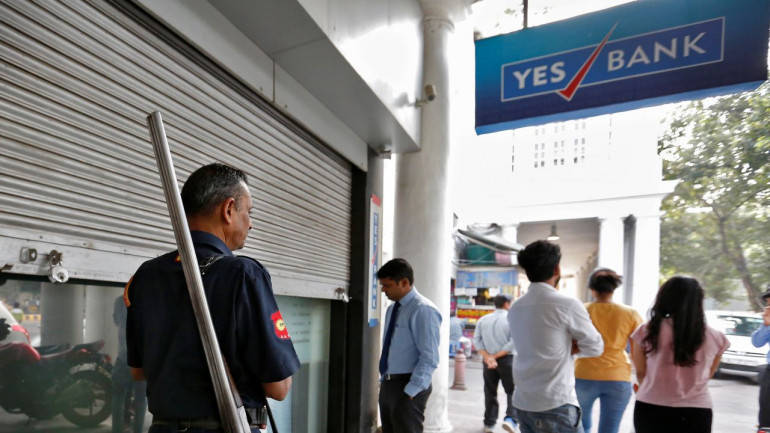Yes Bank watchlist also highlights the failure of credit rating agencies and analysts to spot anomalies and catch red flags on defaults and stress early on.
Ravi Krishnan@writesravi

The stressed loan chickens are coming home to roost for Yes Bank. To extend the avian analogy, is Yes Bank the canary in a coal mine for the Indian banking system?
In the past few months, the consensus has been that the stressed asset recognition phase is over for India banks and it was time for them to focus on resolution. Indeed, in its last financial stability report, the Reserve Bank of India had projected non-performing assets ratio to come down for the entire banking system.
Now, Yes Bank has unveiled a watchlist of Rs 10,000 crore. It has proactively made a contingent provision of Rs 2,100 crore towards these ‘stressed but performing’ accounts. According to Morgan Stanley, even this appears optimistic because Yes Bank’s loan book has a 35 percent exposure to stressed sectors. The watch list comes after the bank reported slippages (fresh loans turning bad) of Rs 3,481 crore in the March quarter, a third of which was attributed to IL&FS and Jet Airways. So, the key question here is how did things go bad, especially within a year, since the central bank’s audit had given the lender a clean chit for financial year 2017-18?
Note that watch lists have to be treated with care. While they are “still performing” assets, history tells us that they have a tendency of turning sour when times are bad. In financial year 2015-16, Axis Bank reported a watchlist of Rs 22,600 crore and said only about 60 percent will turn bad. But consistent re-statement and additions to it were to the tune of 1.2 times the original size, according to Macquarie.
- oThat apart, the Yes Bank episode could be symptomatic of a larger malaise in the financial system at large. There have been several defaults and debt downgrades in sectors such as home finance, non-banking finance, construction, aviation and media. Lenders, some of whom are clutching at illiquid collateral, have entered into standstill agreement with borrowers who are looking at asset sales. And times are bad with the economic growth not perky enough for stressed sectors to bounce back quickly.
Of course, all this has not been reflected in the run-up in banking stocks. The Bank Nifty has outperformed the benchmark by almost 10 percentage points over the last year. But investors would do well to be cautious. These recent incidents shine a light on the aggressive lending practices and poor risk management policies of banks and mutual funds alike. Yes Bank need not be the only lender with exposure to these stressed sectors. While many banks have leant towards retail in recent times, many of them still have a sizeable corporate book.
The other takeaway is the failure of credit rating agencies and analysts to spot these anomalies and catch the red flags early on. A model where the rated entity pays is a key reason why credit rating agencies are often behind the curve. Sell side analysts tend to act in herds and often don’t question management commentary.
To be sure, the very nature of the business is such that analysts have to depend on the management for asset quality and other numbers and go by them. But even when public information is available, they often don’t connect the dots, as independent analyst Hemindra Hazari points out in this example, where a company continued to service one lender’s loans even as it defaulted on all other banks.
“We must eat humble pie today and admit we underestimated risks in structured finance. We got the call wrong,” wrote Macquarie analysts in their Yes Bank earnings note.This also highlights the importance of more transparency. On the face of it, there seems to be a contradiction between RBI giving Yes Bank a clean chit for FY18 and the lender reporting a watchlist that’s larger than its current NPA pile. But Yes Bank could very well have met all of the central bank’s criteria. Investors would not know unless the central bank makes its inspection reports public.
First Published on Apr 30, 2019 03:02 pm















Good financial analysis.
It seems borrowers pay only in upcycle and up to 1st half of bad cycle. Borrowers, then, default.
The lender sud have an ARC, asset reconstruction co., also to buy assets of borrower at the bottom and sell in 2nd half of upcycle. Ave life of a cycle has been 7-8 years. So lender will have to hold the assets for 4-5 yrs to resell, profitably.
Thus a Bank/NBFC (lender), with ARC can make money twice. Once by lending and then by selling assets of borrowers. Good business